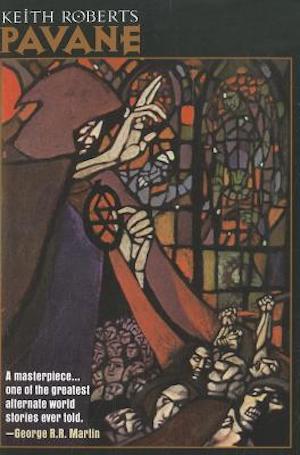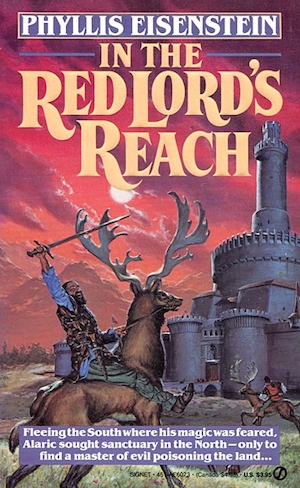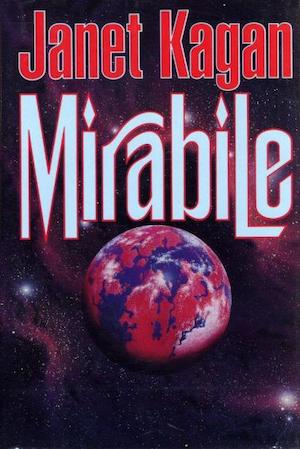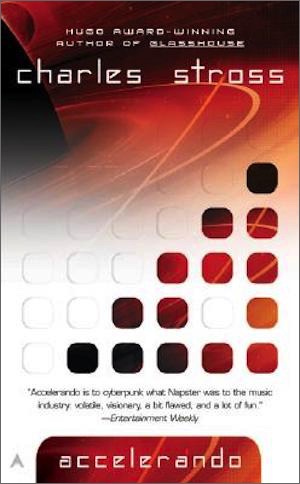Suppose for the moment that you were a hard-working speculative fiction author with a lengthy backlist of short fiction. Further suppose that you wanted to package some of that short fiction into a collection that readers might buy. Imagine your consternation on discovering that collections weren’t selling well and that no publisher wanted to gamble on your work. What is a hard-working author to do?
One solution to a temporary shortage of funds is to don a garish costume, adopt a memorable nom de crime, and launch a series of unnecessarily complex schemes to rob banks. But there is an even easier solution! Simply take those unsellable short works, apply narrative spackle, and transform them into what A. E. Van Vogt called a “fix-up” novel. Readers will barely notice the seams as they enjoy your latest novel1. You will enjoy extra income. Everyone wins—especially your bank manager.
While Van Vogt’s own fix-ups were (to put it charitably) of variable quality, the form has produced legitimate classics that are well worth readers’ time and money. Herewith, five truly glorious fix-ups you might want to read.
Canticle for Leibowitz by Walter M. Miller, Jr. (1959)
Miller’s only novel published during his lifetime, Canticle details the efforts of the pious brothers of the Albertian Order of Leibowitz to preserve scientific knowledge following the Flame Deluge and subsequent Simplification. The results are mixed at best, but the brothers’ hearts were pure.
The novel Canticle began as “A Canticle for Leibowitz,” “And the Light is Risen,” and “The Last Canticle,” all published in The Magazine of Fantasy and Science Fiction between 1955 and 1957. Each was substantially reworked before appearing as the fix-up Canticle for Leibowitz in 1959. The result was an instant, Hugo Award-winning classic. In fact, Canticle was so successful that it eclipsed Miller’s other work; I have encountered people who are entirely unaware Miller wrote other stories.
Pavane by Keith Roberts (1968)

Following Queen Elizabeth I’s assassination, the Reformation is crushed. Spain remains ascendant. The Catholic Church remains the Church and technological and social innovation is discouraged. The consequences (and ultimately, the true cause) of this historical alteration are detailed over generations from the perspective of England’s Dorset region.
The novelettes that became Pavane began as “The Signaller,” “The Lady Anne,” “Brother John,” “Lords and Ladies,” “Corfe Gate,” and “The White Boat,” all published in 1966, all of which save “The White Boat” were first published in Impulse. “The White Boat” first appeared in New Worlds. As with Canticle, the result was an instant classic. While Pavane did not win a Hugo, it was featured in the first Ace SF Specials and is still in print over half a century later.
In the Red Lord’s Reach by Phyllis Eisenstein (1989)

Alaric the Minstrel (bard and teleporter) gains employment in the Red Lord’s court. The mysterious screams heard from the Red Lord’s tower lead Alaric to question the prudence of working for the lord. A man who can teleport need not worry overmuch about imprisonment…but is Alaric the sort of man who will simply walk away from injustice?
Red Lord began as “The Land of Sorrow,” “The Mountain Fastness,” and “Beyond the Red Lord’s Reach,” all of which first appeared in The Magazine of Fantasy and Science Fiction between 1977 and 1988. Annoyingly, despite Eisenstein’s talent as a writer, both this volume and 1978’s Born to Exile are long out of print2. Alaric-curious readers can seek out Eisenstein’s more recent Alaric tale, 2014’s “The Caravan to Nowhere,” which may be found in the Rogues anthology edited by Gardner Dozois and George R.R. Martin.
Mirabile by Janet Kagan (1991)

A mishap en route to an exoplanet cost the hopeful pioneers the index that was key to a cutting-edge biotechnological tool. Lack of index did not prevent genetically-engineered animals and plants from occasionally producing dissimilar, sometimes dangerous, offspring. It falls to Annie Jason “Mama Jason” Masmajean to deal with the resulting “Dragon’s Teeth.”
Mirabile’s composite parts—“The Loch Moose Monster,” “The Return of the Kangaroo Rex,” “The Flowering Inferno,” “Getting the Bugs Out,” “Raising Cane,” and “Frankenswine”) first appeared in Isaac Asimov’s Science Fiction Magazine between 1989 and 1991. As fix-ups go, the efforts to transform the original short pieces into a novel are perfunctory to the point that for years I thought it was a collection. Nevertheless, the result entertains. It’s too bad that Mirabile is currently out of print. Perhaps a letter-writing campaign to Mirabile’s publisher Tor could change that!
Accelerando by Charles Stross (2005)

As was foretold by techno-optimistic futurists, the Singularity utterly transforms the world. A trifling side effect barely worth mentioning is that intellectually out-classed humans are swiftly reduced from Earth’s dominant thinkers to cognitive archaea. As detailed over generations, the post-Singularity era is an exciting time to be alive…or to be consumed by ruthless, super-intelligent AIs.
Accelerando’s component chapters (“Lobsters,” “Troubadour,” “Tourist,” “Halo,” “Router,” “Nightfall,” “Curator,” “Elector,” and “Survivor”) were all first published in in Asimov’s Science Fiction between 2001 and 2004. Accelerando was very well received; I don’t have the spare word count to list every award nomination that the fix-up and its parts earned. One wonders how Stross finds the mantlepiece space for all the awards. Accelerando can be downloaded here. Try not to burn out the servers.
Fix-ups are a venerable, respectable approach to writing and publishing speculative fiction. The five examples above are only a very small sample of a very large body of work3 [3]. No doubt I’ve missed some very notable examples. Feel free to lambast me for my omissions and correct my oversights in comments below.
